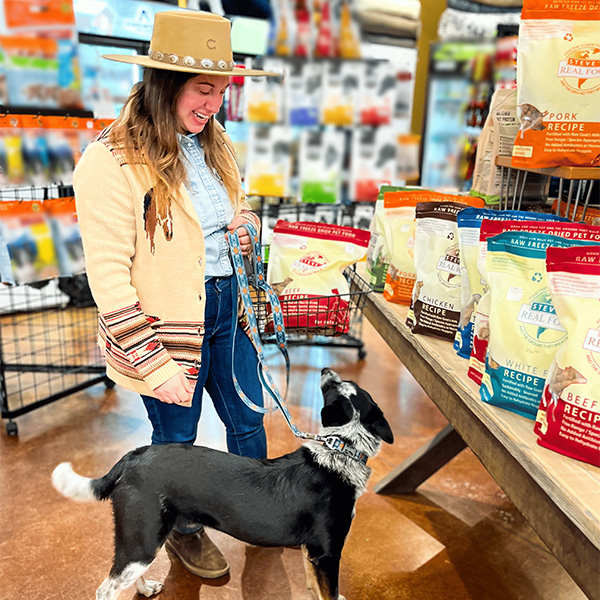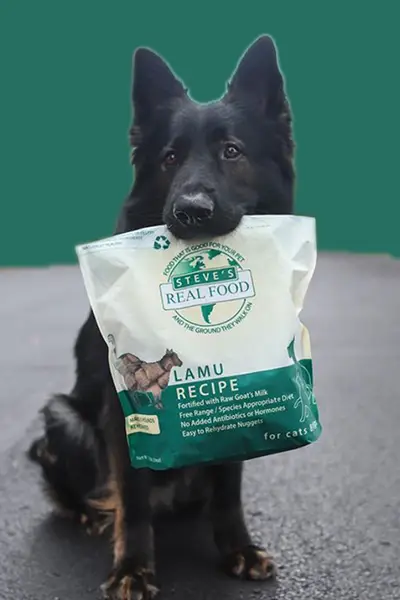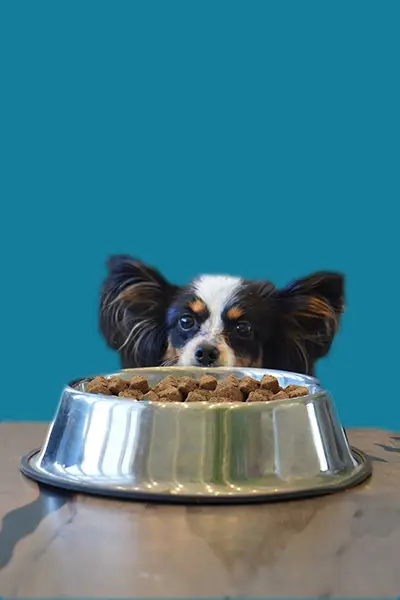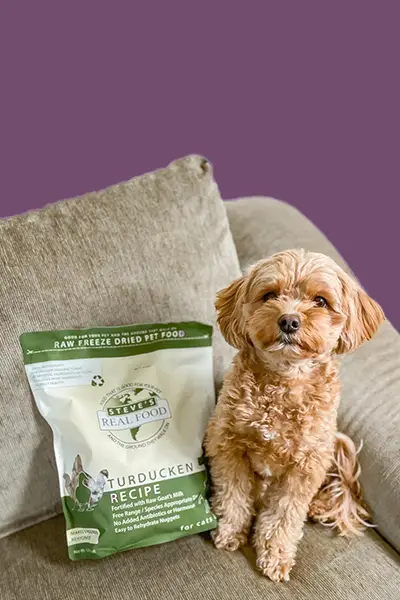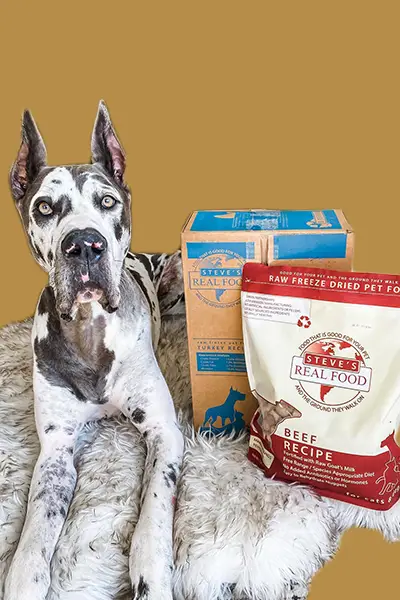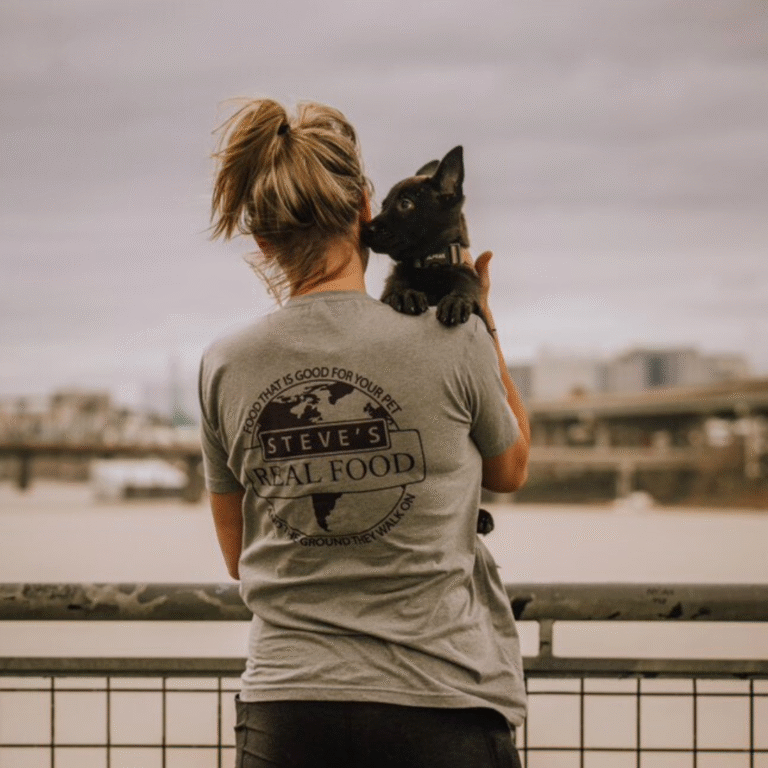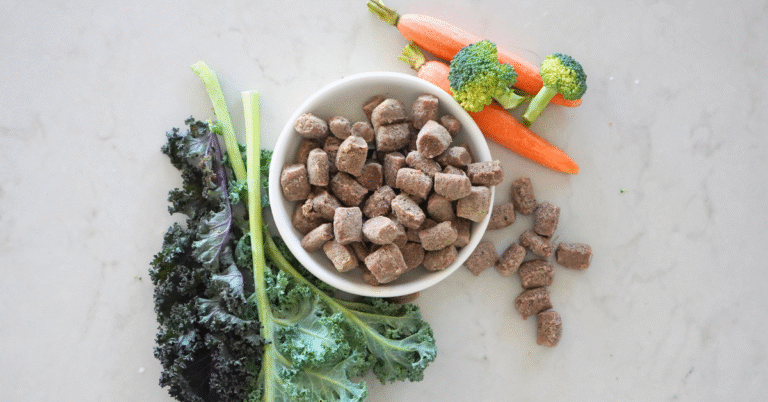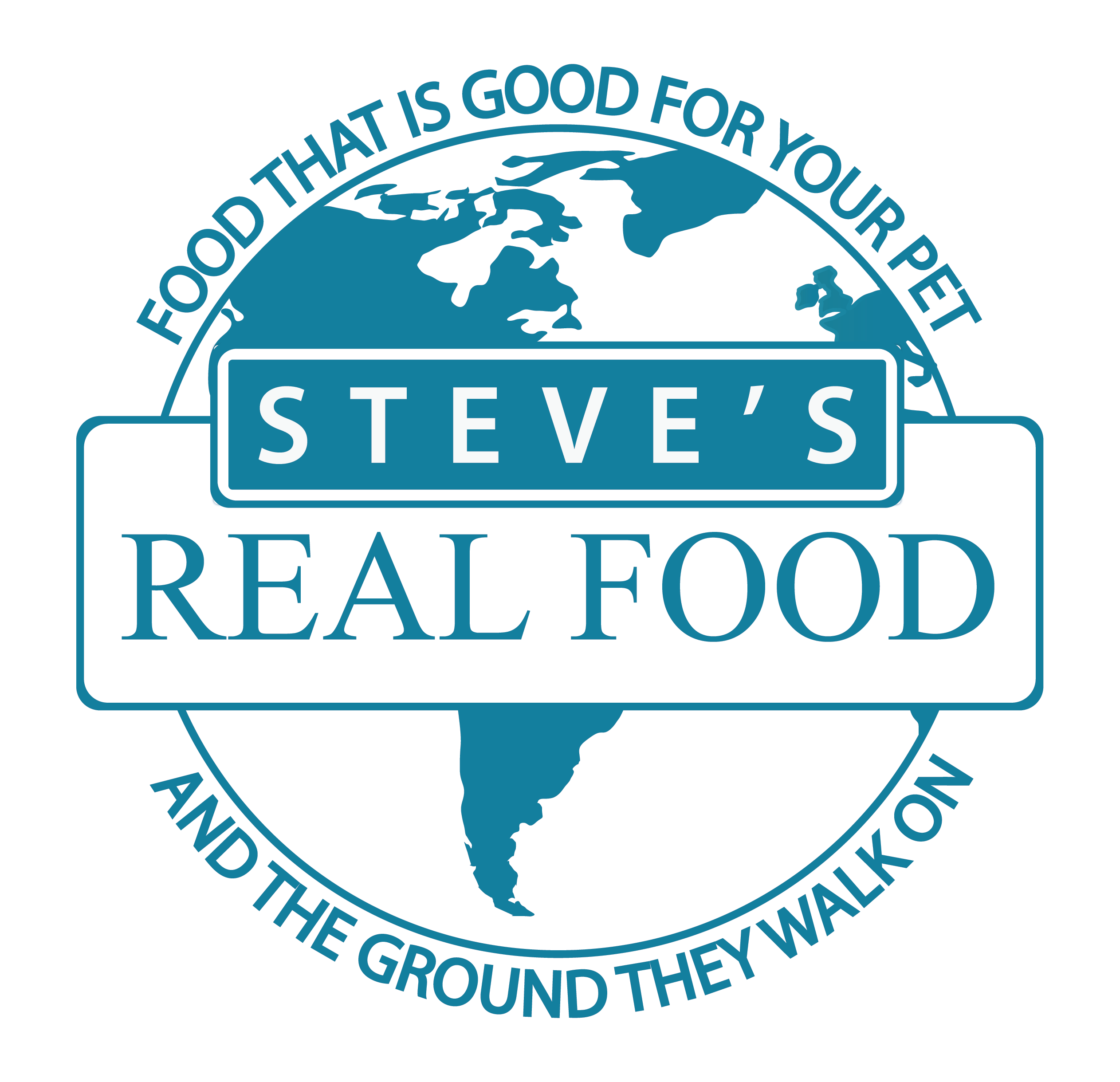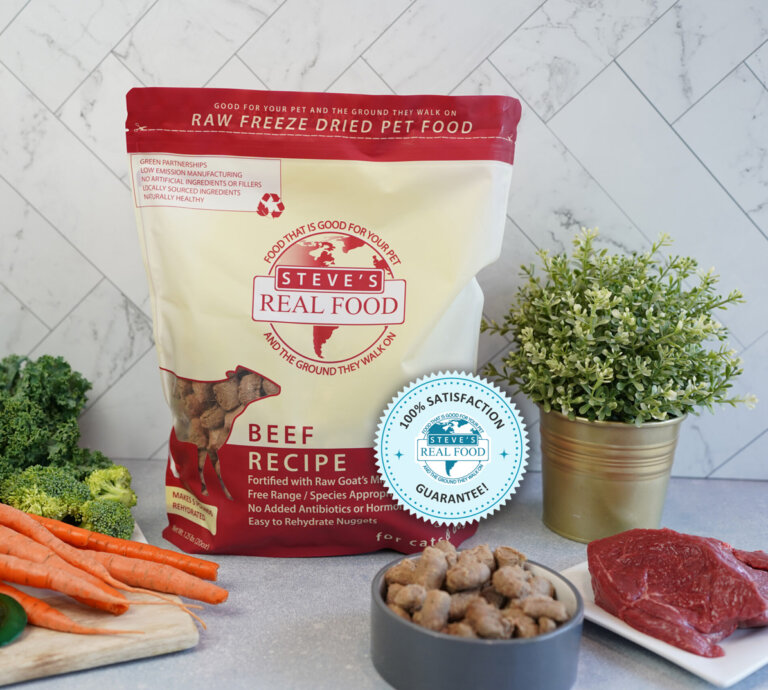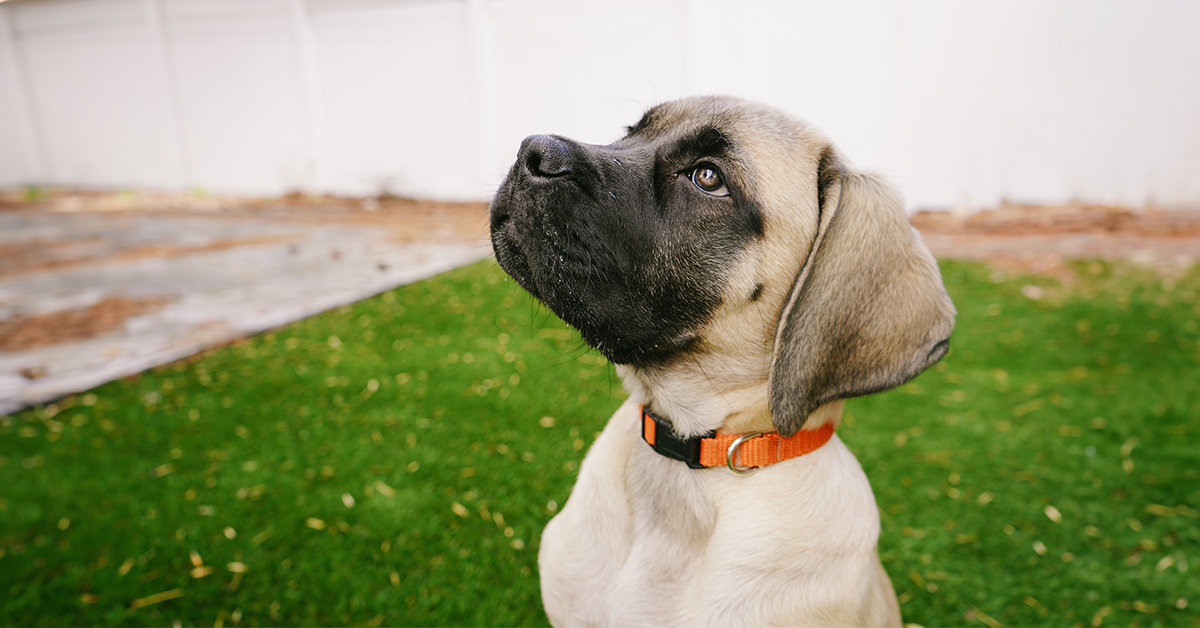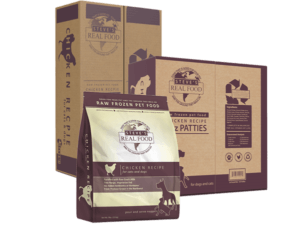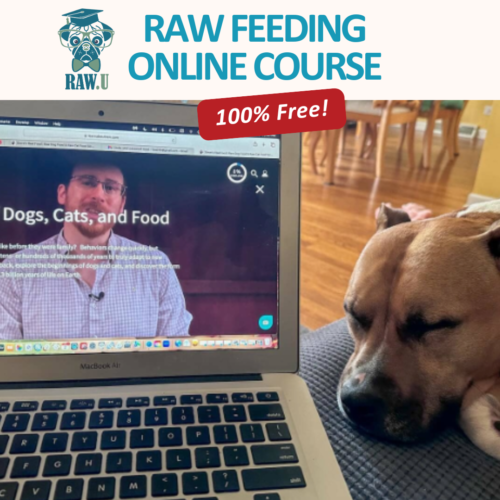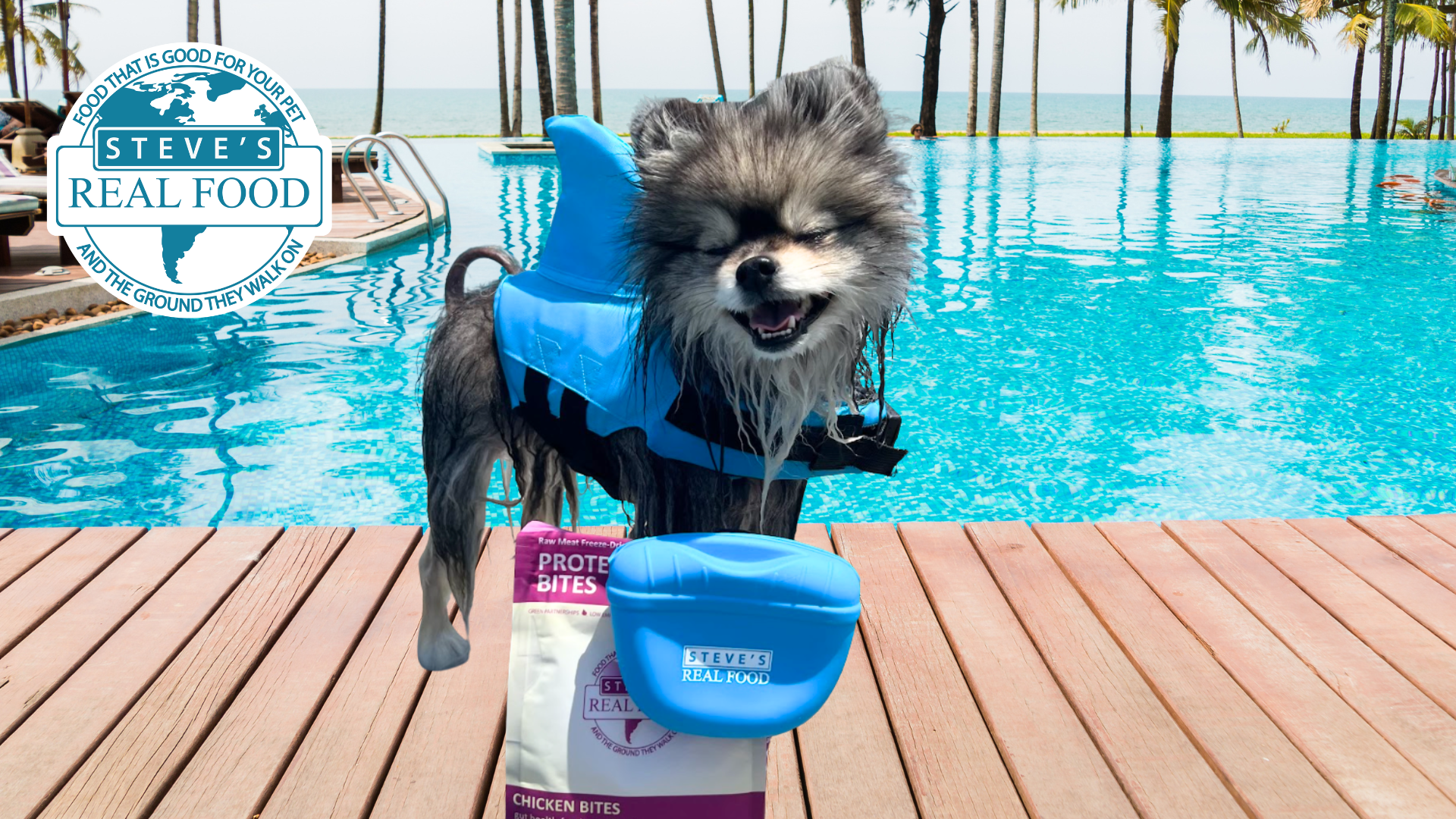Puppies eat a lot!
Young pups can eat up to five times the amount of food that an adult dog the same size would consume. In the first year or two, some puppies grow to 200 times their birth weight. A Mastiff who weighs one pound at birth may grow to 200 pounds or more by the time they’re just a few years old! That’s a lot of growth quickly, which makes proper feeding incredibly important.
What is the Best Food for a Puppy?
One of the most essential points is that your puppy needs variety. Just like human babies, puppies need exposure to a wide range of foods for the beneficial nutrients they provide and for immune system education. It’s necessary to build a strong foundation, create strong tummies that can flexibly eat many different things, and prevent intolerances and allergies later in life.
When it comes to pet food, be sure to rotate proteins. There are no specific rules on rotational feeding. Some people buy a new protein each time they restock; others feed a different one at every meal. Do what works best for you and your pup! Aside from rotating your proteins, you can add variety by including small amounts of fruits, veggies, herbs, or mushrooms to your pup’s meals. Do your research to choose safe, beneficial toppers. Just like with a baby, when introducing something new, start slowly, offering a little taste at first. It’s also helpful to add new things to their diet one at a time. Doing so ensures that it’s easy to know what caused the problem if something doesn’t sit right.
The best base diet for puppies looks like the best food for adult dogs or any other animal on the planet: fresh, raw foods. Specifically, we recommend a balanced, raw, meat-based diet that includes muscle meat, organ, and bone as the majority of the recipe and is balanced with fresh fruits, vegetables, and natural supplements such as kelp, green-lipped mussel, and goat milk.
Here is the ingredient list for our Steve’s Original Chicken formula:
Ground Chicken, Ground Chicken Bone, Chicken Livers, Chicken Gizzards, Broccoli, Carrots, Romaine Lettuce, Cantaloupe, Goat’s Milk, Flaxseed, Dried Kelp, Salmon Oil, Coconut Oil, Inulin, Taurine, New Zealand Green Lipped Mussel, Ground Eggshell
The meat and organs provide an exceptional blend of amino acids, minerals, fats, and nutrients. Raw bone is the best natural source of calcium, phosphorous, and other minerals and compounds. Raw fruits, veggies, and natural supplements contain thousands of compounds that will benefit your growing pup, and prebiotic fiber builds a strong community of beneficial bacteria and microbes.
The quality of the materials you work with is essential when building a body. Though you could build a “complete and balanced” shelter from 2x4s and nails, you’d need more complex materials to build the Taj Mahal. Fresh raw foods contain many nutrients and compounds that may be lost or damaged during high-heat cooking. We know of 20-30,000 compounds in fresh food ingredients, and many benefit overall health. When you create pet food entirely from raw, real food ingredients, these nutrients and compounds remain in the food to nourish your pup. That means more quality materials your puppy’s body gets to work with.
For one tiny example, consider vitamin A: most processed foods contain one compound from the vitamin A group, whereas we know of at least 15 major compounds. Many of the 20,000+ beneficial compounds in natural foods are phytonutrients like flavonoids and carotenoids in fresh fruits and veggies. That’s precisely why we balance our foods using pesticide-free produce and natural supplements like goat milk and dried kelp. Nature creates the very best materials for building a strong, healthy pup!
Fresh raw foods are more digestible than processed dry foods. They promote better mood and disposition, leading to better learning and a higher quality of life. Puppies who eat raw foods as at least part of their diet also see less risk of skin issues, digestive issues, or allergies later in life. Other expected benefits include better oral health and more consistent energy levels.
A 2021 study published in the International Journal of Veterinary Sciences and Animal Husbandry found raw diets are significantly more digestible than dry foods, with raw foods averaging 95% digestibility and dry foods averaging 57%. Diets with higher digestibility allow more nutrients to be available to the body, which is incredibly important during the relatively short time it takes puppies to grow into adults. It also means less poop to pick up!
Raw foods may lead to better mood and disposition: a 2019 study by Oregon State University found that friendly and aggressive shelter dogs showed apparent differences in the types and quantities of microbes in their gut. The microbes in the friendly dogs’ digestive tracts were the same microbes that thrived on a raw food diet, as found in a 2018 study from the University of Illinois. According to the same study, the microbes found dominating the aggressive dogs’ digestive tracts were the same types that thrived on dry kibble diets. Fresh foods encouraged happy microbes, and processed foods encouraged aggressive microbes.
Puppies who eat raw foods have a lower risk of developing allergies later in life. In a 2021 study by The University of Helsinki, puppies who ate at least 20% of their calories as fresh, raw foods saw a much lower incidence of skin issues or allergies later in life. For more information about raw foods and allergies, check out our blog, How Diet and Environment Impact Allergies in Dogs and Cats.
In short, the best puppy food is a balanced, fresh, raw diet with lots of variety.
Can I Feed “Adult” Dog Food to a Puppy?
Though adult dogs and puppies require the same nutrients, not all adult foods are appropriate for a growing pup. Luckily, there’s an easy way to check whether a food is suitable for puppies. You should find an AAFCO statement on every bag of pet food in the US. There are three differences you’ll typically see:
- Food may be formulated to meet the nutrient profiles established by AAFCO for the maintenance of adult dogs. This statement indicates that the food is not made for puppies, and the nutrients may not be balanced for healthy growth.
- Food may be formulated to meet the nutrient profiles established by AAFCO for All Life Stages. This statement indicates that it is made for puppies, adults, and seniors but not for large or giant-breed puppies.
- Food may be formulated to meet the nutrient profiles established by AAFCO for All Life Stages including the growth of large-size dogs. This statement indicates that the food is complete and balanced for all dogs, from puppy through senior, though you’ll still want to work closely with your vet if you have a giant-breed puppy.
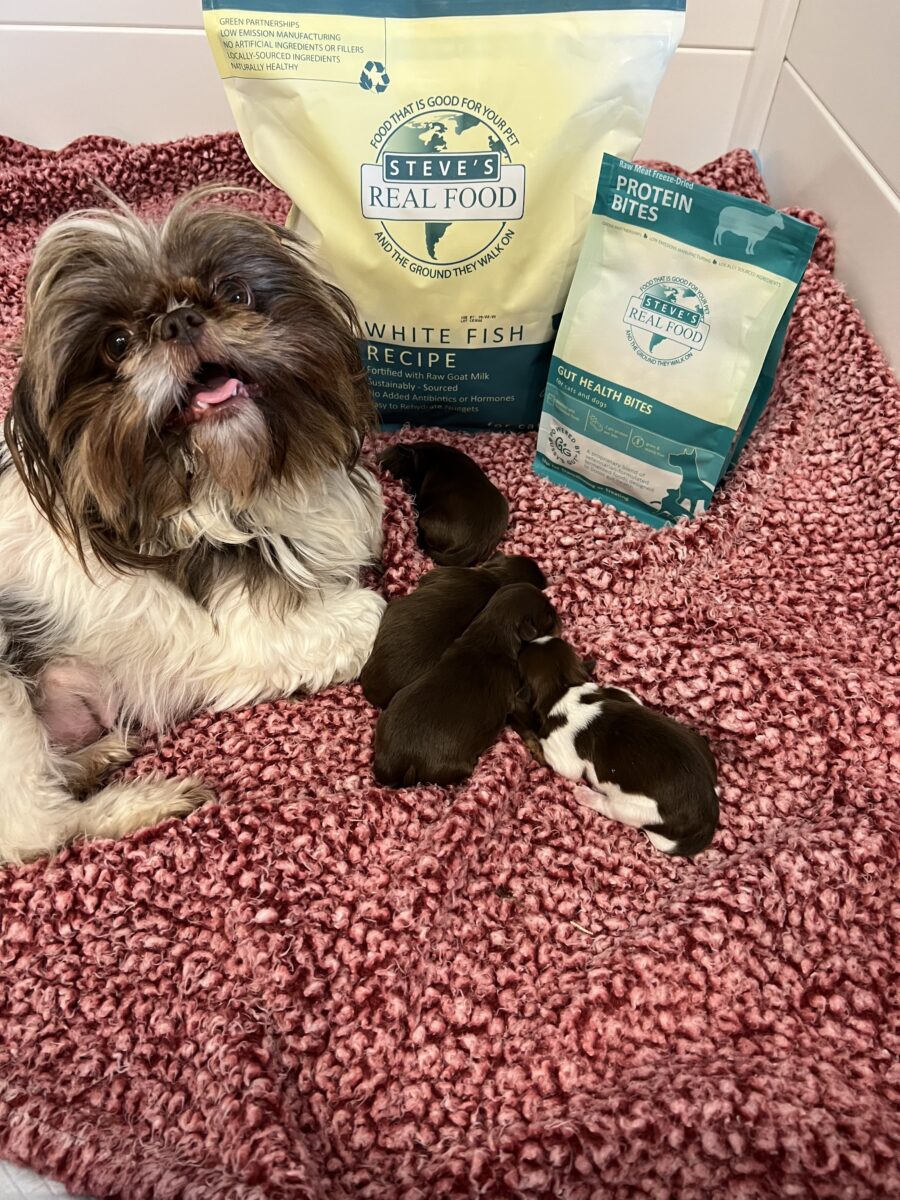
What is the Best Food for a Large or Giant Breed Puppy?
Large or giant breed dogs have some special considerations regarding food. Growing so large so fast comes with some risk, so it’s even more critical to provide the right balance of nutrients, especially the minerals Calcium and Phosphorus. They are a significant component of bones, and if they are not in the proper balance for large and giant breed dogs, it can lead to severe structural problems and crippling mobility issues later in life.
- For extra-large breed puppies, look for a ratio of 1:1 to 1.8:1 – most dogs on the lower end of the large breed scale will do fine with a ratio between 1:1 and 2:1
- For giant breed puppies, this ratio should be 1:1 to 1.5:1
To find our food’s Calcium-to-phosphorus ratio, choose the flavor you’re interested in on our product page and click on the Nutrition Facts section.
A few other essential nutrients for larger pups:
– Vitamin C is in many fresh fruits and vegetables. It plays a role in tissue formation and maintenance, immune system balance, and more. Dogs can synthesize vitamin C, but providing some through the diet is good, especially for pups who grow big.
– Vitamin D is in many foods, such as vegetables, fruits, red meats, and fish. Adequate vitamin D is needed for the absorption of calcium and phosphorus and also helps with the development of the heart and connective tissues.
– Manganese is an often-overlooked trace mineral. It plays a vital role in metabolism and in developing connective and nerve tissues. This article by Dr. Karen Becker links a lack of manganese to connective tissue dysfunctions and injuries. Foods rich in manganese are green-lipped mussels, kelp, spinach, green leaf lettuces, spirulina, turkey and beef liver, beef heart, and dark chicken meat.
– DHA is an omega-3 fatty acid. DHA-rich diets support healthy vision and help proper brain development. Like other omega-3s, DHA is a very fragile compound that will break down quickly at room temperature in the presence of oxygen. That means the DHA in dry pet foods will degrade quickly during regular storage. DHA is found in green-lipped mussels and fish oil.
Many of our Steve’s Real Food Original diets will help support pups that will grow very large, but no matter what food you choose, you should work closely with your veterinarian to ensure your pup is growing appropriately.

Is Raw Food Safe for Puppies?
The short answer is yes. But it depends on the food and the company that makes it. Let’s address three of the most common safety concerns.
- Nutrient Balance – If the food is not properly balanced, it can cause growth problems. We balance our foods naturally without synthetic supplements and periodically test the nutrients in the food to ensure they’re balanced just right to support puppies through seniors.
- Bacteria – Food-borne illness can be a concern with raw foods. We use excellent human-quality sourcing and a unique process called High-Pressure Processing (HPP) to eliminate the risk of harmful bacteria. Our gentle HPP process even leaves the probiotics alive and well so they can keep your pet’s gut happy. Learn more about our HPP process here.
- Parasites—Raw meat inherently evokes a fear of parasites. However, by using exceptional sourcing, we lower the risk of parasites from the start. Deep freezing kills parasites. We keep our food and ingredients below negative 20 degrees; no parasites can survive those temperatures.
To learn more about our safety practices, join our monthly webinar, “Raw Food Safety.” We’ll discuss these topics in more detail and follow some of our food from farm to bowl to see how it all comes together.
Register here for Raw Food Safety or check out our free Nutrition Course at LearnAboutRaw.com.
How to Transition Puppies to Raw Food
Puppies can be weaned directly onto raw foods or transitioned from any food they are currently eating. We recommend starting with Steve’s Real Food Original Chicken formula, as it’s very palatable and easy for young puppies to digest.
To transition, simply replace small amounts of their current food with the new raw food. Every few days, you can add more raw food and reduce the amount of old food. We recommend transitioning gradually over two weeks to allow your puppy to adjust smoothly. If you notice loose stool or gassiness, roll the transition back and continue slowly. Sensitive pets may benefit from adding a small amount of goat milk to their diet a week or two before transitioning. Pureed, 100% pumpkin is also an excellent addition to meals during the adjustment period and can help prevent or reduce digestive issues or loose stool. For more information, check out our video on Transitioning Your Pet.
General Puppy Feeding Tips
- Feed meals rather than leaving food available at all times. Leaving food out is also called “free feeding.” It encourages a grazing mindset that often leads to overeating (and overfeeding). Pups should have regular daily meals based on their size and age. Water should be available at all times.
- Ensure feeding isn’t stressful. Choose a calm, easy-to-access location for food and water dishes. If you notice your pup relocating their food often, they may not be comfortable with the spot where their bowl is. Their crate can be an excellent place to feed meals since it is a safe, positive environment replicating a den.
- Don’t forget the treats. Choose healthy treats, be mindful of how many you’re giving, and reduce the amount of food accordingly. Treats should make up no more than 10% of your puppy’s daily calorie intake. For tasty treats with great benefits, check out our Freeze-Dried Protein Bites.
- Sometimes, your pup needs more calories than usual. Puppies go through growth spurts just like human kids do. If your pup seems hungrier than usual, feeding him a little more is okay, but don’t go overboard. Ideally, you want slow and steady growth; overfeeding can cause faster growth in puppies. For pups who often act hungry, you can add extra fruits and veggies to the bowl as a low-calorie way to fill them up for longer. Fresh berries and dark leafy greens can be pureed or chopped, and canned pumpkin can provide soluble and insoluble fiber.
- Skip the bowl. There are so many better options out there. Slow down your puppy’s eating by using a slow feeder like this one from West Paw. Enrichment while eating is a great way to keep your puppy from feeling ravenous between meals, as it can help your pup feel fuller longer.
How Much Food to Feed a Puppy, and How Often Should You Feed?
Using Steve’s Real Food Feeding Calculator is the easiest way to determine how much food your puppy needs. You can enter your pup’s information to determine how much to feed. Each puppy is different, and the calculation is a starting point. You may need to adjust the amount based on your puppy’s activity level and metabolism. It’s essential to work with your vet throughout the growth period. Using a body condition scoring chart to evaluate your puppy’s weight and body condition as he grows is also helpful.
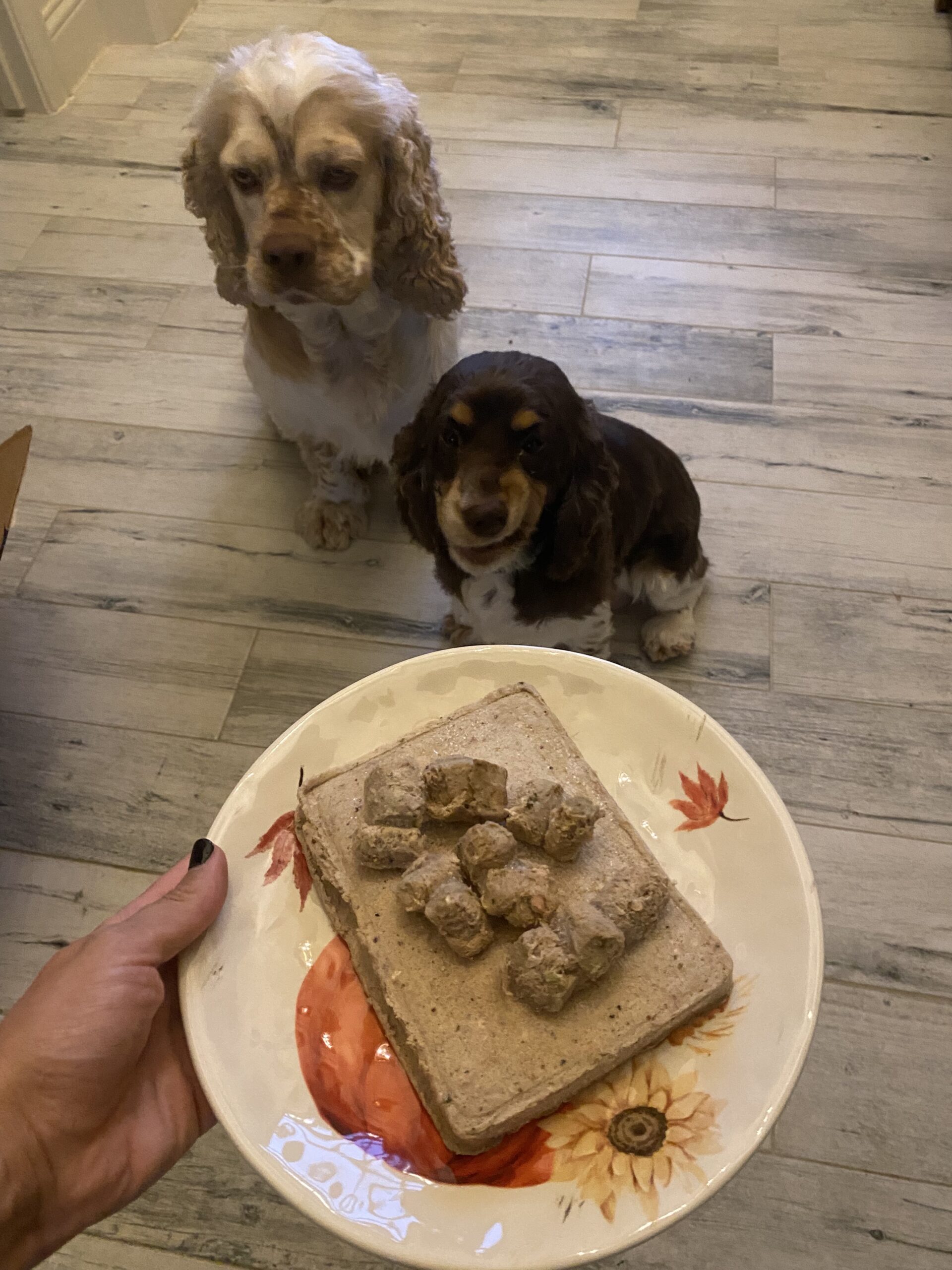
Here is an example of manually calculating how much food your puppy should eat daily.
A small-breed puppy is four months old, and she weighs 9 lb. Given her age and size, she needs about 8% of her body weight in fresh food every day.
9lb x 0.08 = 0.72lb per day.
One pound contains 16 ounces, so to convert that to ounces, we can multiply the number of pounds per day by 16
0.72lb per day x 16 = ~12oz per day
One note to make measuring easier: One cup of frozen nuggets typically weighs about 4oz.
Feeding Puppies Based on Breed Size
Small & Toy Breed Puppies - Weigh up to 25 lbs as Adults
Small puppies grow very quickly, typically reaching their adult size between 9 and 12 months. They need a ton of calories early on and will burn through them quickly, so their feeding amounts must be adjusted often to avoid excessive weight gain. A good way to guess what your puppy will weigh as an adult is to take its weight at six weeks old and multiply it by four. Small breed puppies will grow the fastest from birth to about ten weeks old.
Small breeds should eat four times daily until they’re about four months old. At that point, you can reduce meals to two to three times per day, but don’t decrease the daily amount of food—they still need plenty of calories!
General guidelines for feeding your small or toy breed puppy based on their age:
- 2-3 Months Old – 8-10% of their current weight in fresh food per day.
- Around 12 weeks, adult teeth will emerge, and you can introduce raw, meaty bones like chicken or duck necks and wings. Offer necks and wings cut up or partially frozen to ensure your pup chews and swallows smaller pieces. You can also pack one of their raw meals into a Kong toy and freeze it for a gum-soothing meal.
- 4-5 Months Old – 6-8% of their current weight in fresh food per day
- 6-9 Months Old – 4-6% of their current weight in fresh food per day
- 9-12 Months Old – 3-4% of their current weight in fresh food per day. Your small or toy breed will be considered an adult, so aim for a maintenance diet closer to 3% of their current weight in fresh food per day.
Medium Breed Puppies - Weigh 26 lb to 55 lb as Adults
Medium breeds can lean toward the small breed side of the spectrum – burning calories very fast and requiring lots of fuel – or the large breed side – a slower metabolism requiring less fuel for a slower growth rate. Where they fall will depend more on breed than expected adult weight, so research your particular breed. To understand what your medium-breed puppy may weigh as an adult, take their weight at 14 weeks and multiply it by 2.5. Medium-breed puppies will grow the fastest from birth to around 16 weeks. Medium breeds should eat four times daily until they are about four months old. At that point, you can reduce their meals to two to three daily. Their feeding calendar looks a lot like the small breed calendar, but keep in mind that this is just a starting point, and adjustments need to be based on individual needs and development.
General guidelines for feeding your medium breed puppy based on their age:
- 2-3 Months Old – 8-10% of their current weight in fresh food per day.
- Around 12 weeks, adult teeth will emerge, and you can introduce raw meaty bones like chicken or duck necks and wings or marrow bones. Offer necks and wings cut up or partially frozen to ensure your pup chews and swallows smaller pieces. You can also pack one of their raw meals into a Kong toy and freeze it for a gum-soothing meal.
- 4-5 Months Old – 6-8% of their current weight in fresh food per day
- 6-9 Months Old – 4-6% of their current weight in fresh food per day
9-12 Months Old – 3-4% of their current weight in fresh food per day. Typically, around a year of age, your medium breed will be considered an adult, so aim for a maintenance diet closer to 3% of their current weight in fresh food per day.
Large Breed Puppies - Weigh 56 lbs to 100 lbs as Adults
It’s essential to fuel slow, steady growth in puppies that will be large as adults. The average rottweiler can grow from 14oz at birth to 75lb by the end of the first year! Their joints are growing and supporting their ever-increasing weight during this rapid growth. It’s a lot of stress on their bodies. If your puppy will be large or giant, keep them lean to minimize this stress and the risk of growth problems. By the time they are six months old, they may reach ⅔ of their adult weight.
Until they are four to six months old, they should eat three to four equally-sized meals daily. Between four and six months, depending on breed, you can reduce feeding back to two equally-sized meals per day.
Again, this calendar is a starting point and should be adjusted depending on individual needs.
General guidelines for feeding your large breed puppy based on their age:
- 2-3 Months Old – 8-10% of their current weight in fresh food per day.
- Around 12 weeks, adult teeth will begin to emerge, and you can introduce raw meaty bones like chicken or duck necks and wings or marrow bones. Offer necks and wings cut up or partially frozen to ensure your pup chews and swallows smaller pieces. You can also pack one of their raw meals into a Kong toy and freeze it for a gum-soothing meal.
- 4-5 Months Old – 6-8% of their current weight in fresh food per day
- 6-9 Months Old – 4-6% of their current weight in fresh food per day
- 9-12 Months Old – 3-4% of their current weight in fresh food per day
- 12-24 Months Old – 2-3% of their current weight in fresh food per day, depending on activity.
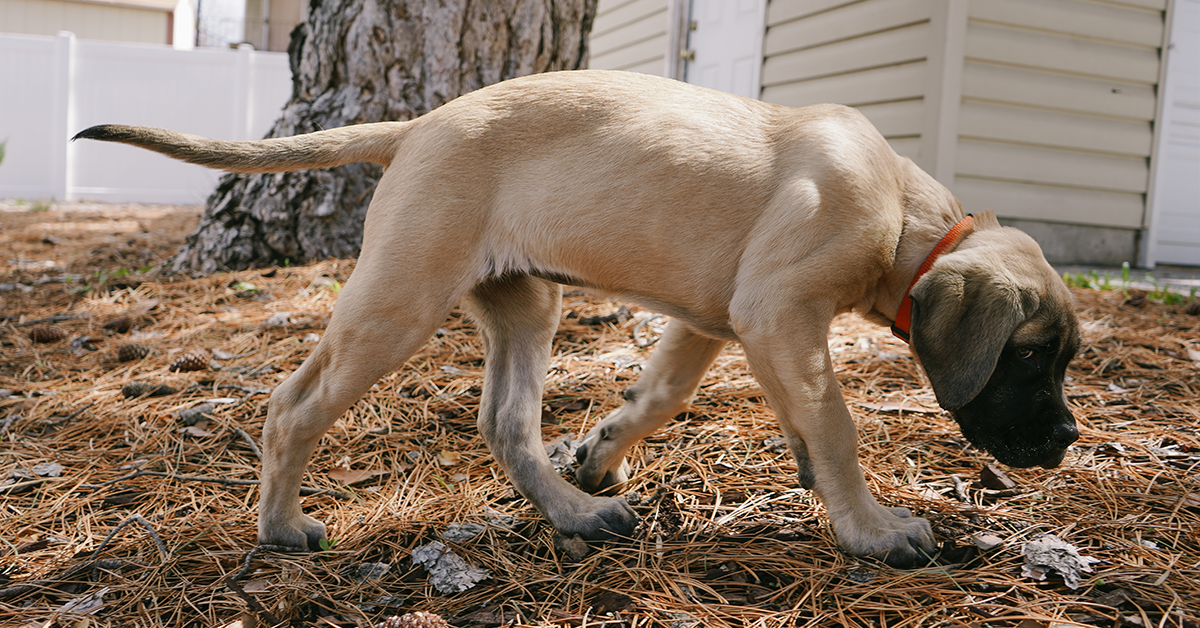
Giant Breed Puppies - Weigh Over 100 lbs as Adults
The tallest and heaviest of all dogs, giant breeds can grow over 200 times their birth weight in less than two years. They may reach half their adult weight by six months, meaning they have gained nearly a pound a day! This incredible growth means their bones and frame must grow quickly and substantially, putting them at risk of forming improperly and serious mobility issues. It is imperative to fuel slow, steady growth and keep them lean. Work with your vet and use a body scoring chart to keep them on track. On a body scoring chart, they should stay around “4” or “5” out of “9”.
Until four to six months, they should get three to four equal meals per day. Between four and six months, they can be cut back to two equally sized meals per day. Giant breed puppies grow substantially faster than smaller breeds, but they remain puppies for longer. This calendar is a starting point and should be adjusted to fit each individual.
As a general guideline for feeding your giant breed puppy based on their age:
- 7-10 Weeks Old – 9-10% of their current weight in fresh food per day
- 10-16 Weeks Old – 7-8% of their current weight in fresh food per day
- 16-20 Weeks Old – 6-7% of their current weight in fresh food per day
- 20-24 Weeks Old – 5-6% of their current weight in fresh food per day
- 24-36 Weeks Old – 4-5% of their current weight in fresh food per day
- 36-56 Weeks Old – 3-4% of their current weight in fresh food per day
- 56-68 Weeks Old – 3-3.5% of their current weight in fresh food per day
- 68 Weeks to Adult—2-3% of their current weight in fresh food per day. As they mature more, you can cut this down to 1.5%, depending on their activity level.
Exercise your giant breed puppy very carefully until all the growth plates have closed, around 24-26 months old. Avoid jumping activities and slick surfaces—puppies are clumsy, so take extra care to prevent injury to the limbs and joints!
Nourish Your Puppy with Steve's Real Food
Providing the right nutrition is paramount in ensuring the health and vitality of your growing puppy. From understanding the best food options, including the benefits of raw feeding and safety considerations, to navigating the transition process and tailoring feeding plans based on breed size, every aspect plays a crucial role in their development. By incorporating the insights and tips shared in this blog, you’re equipped to make informed decisions that will set your puppy on the path to a healthy and happy life. Remember, feeding isn’t just about sustenance – it’s about nurturing a lifelong bond and fostering their well-being from the very start. Here’s to many joyful moments and wagging tails ahead with your cherished companion!
 Beef
Beef Chicken
Chicken Whitefish
Whitefish Pork
Pork Lamb
Lamb Turkey
Turkey Turducken
Turducken All Protein
All Protein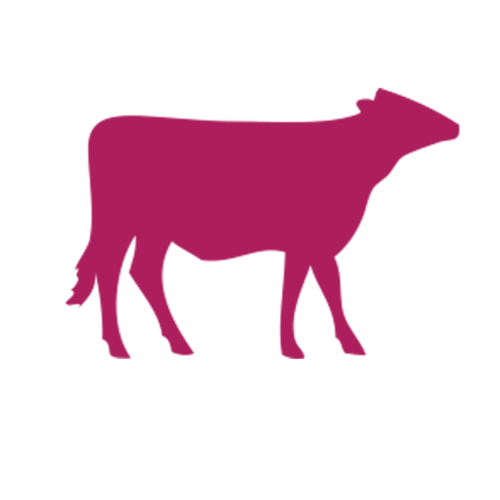 Beef
Beef Chicken
Chicken Whitefish
Whitefish Pork
Pork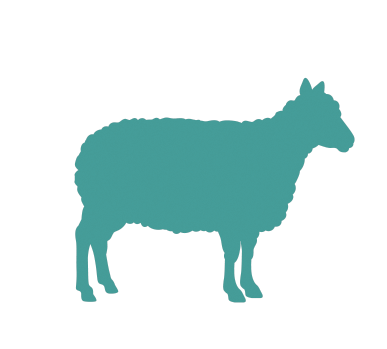 Lamb
Lamb Turkey
Turkey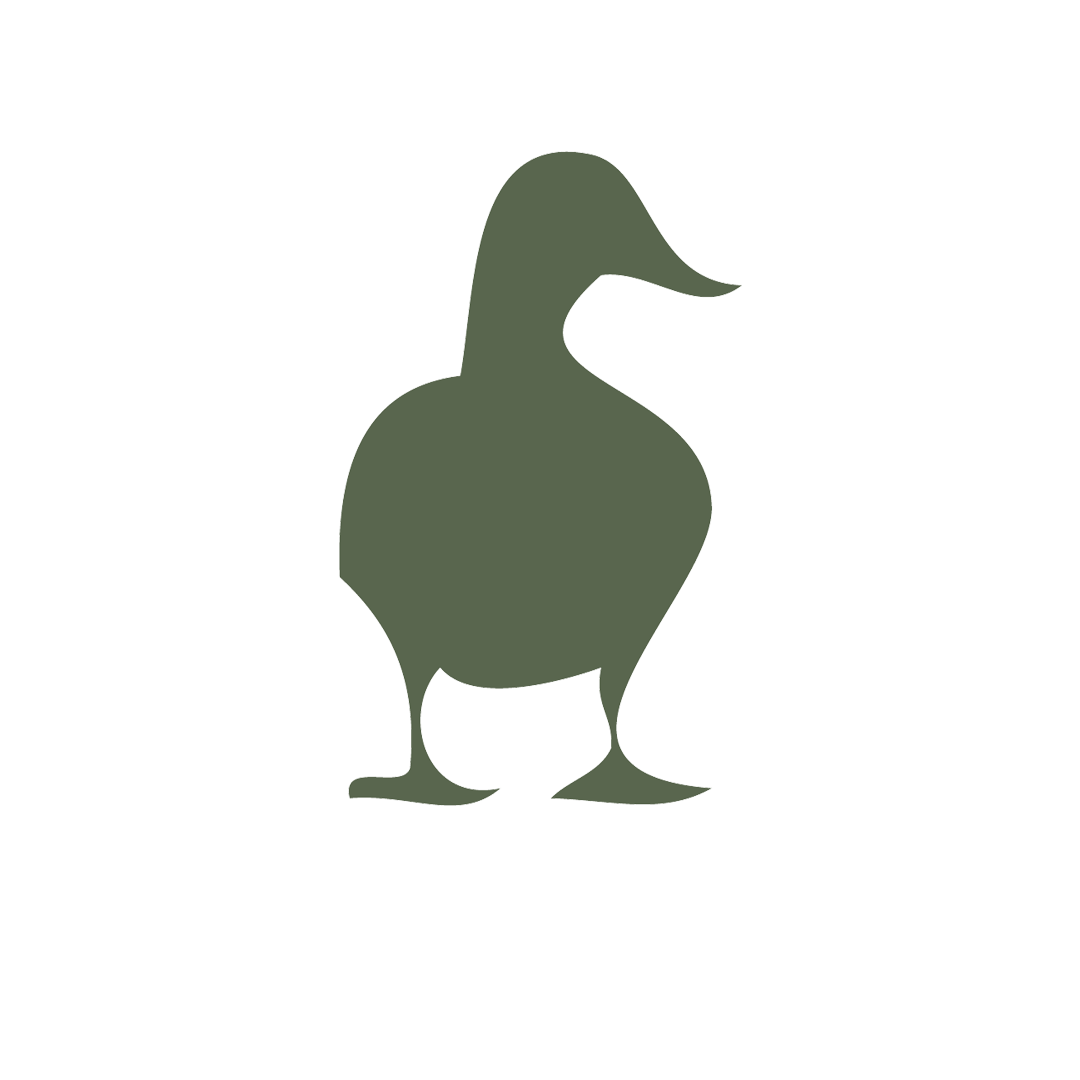 Duck
Duck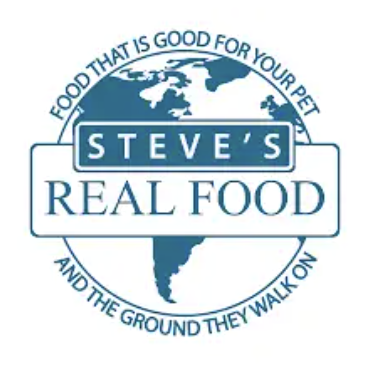 All Products
All Products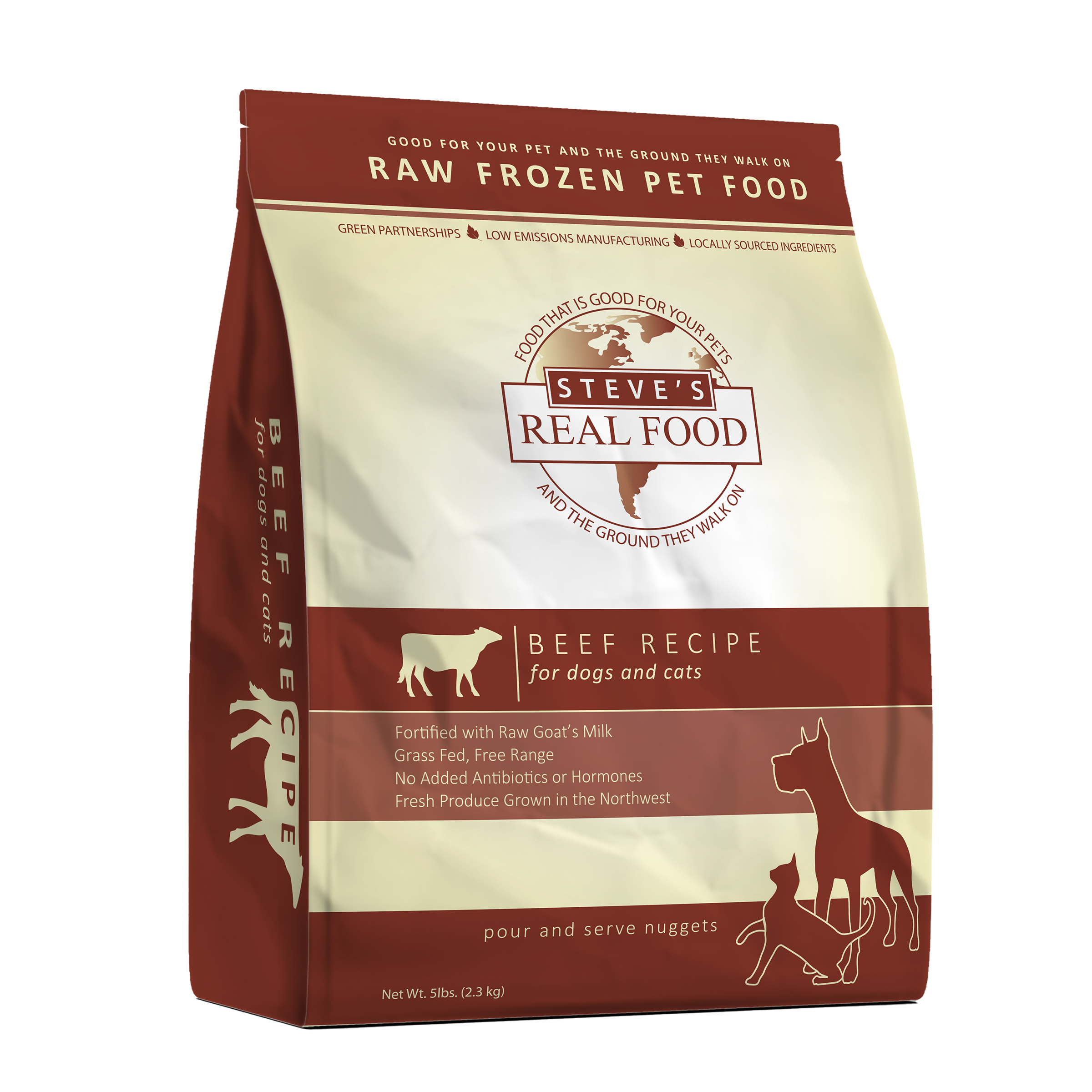 Frozen Raw Pet Food
Frozen Raw Pet Food
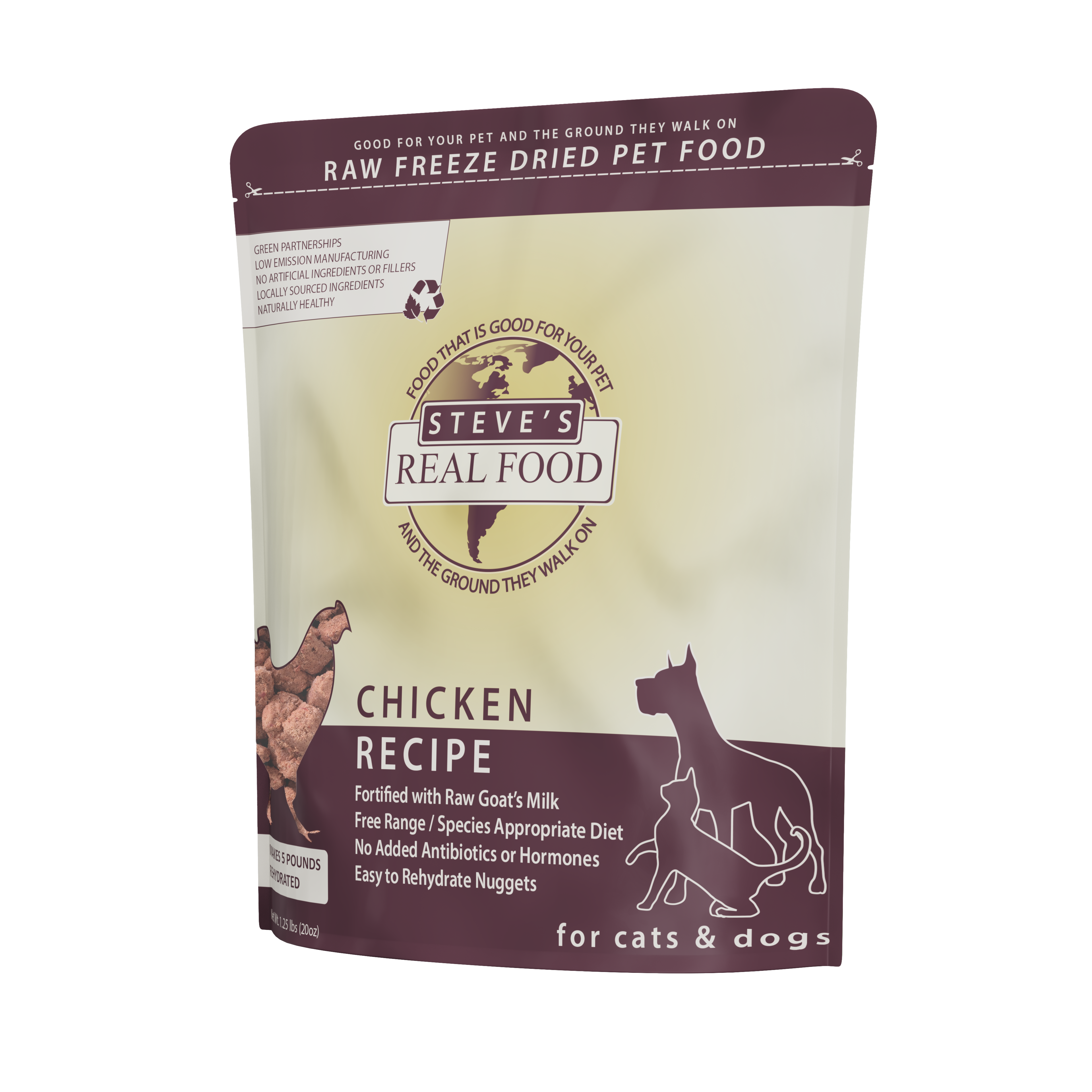 Freeze Dried Raw Pet Food
Freeze Dried Raw Pet Food
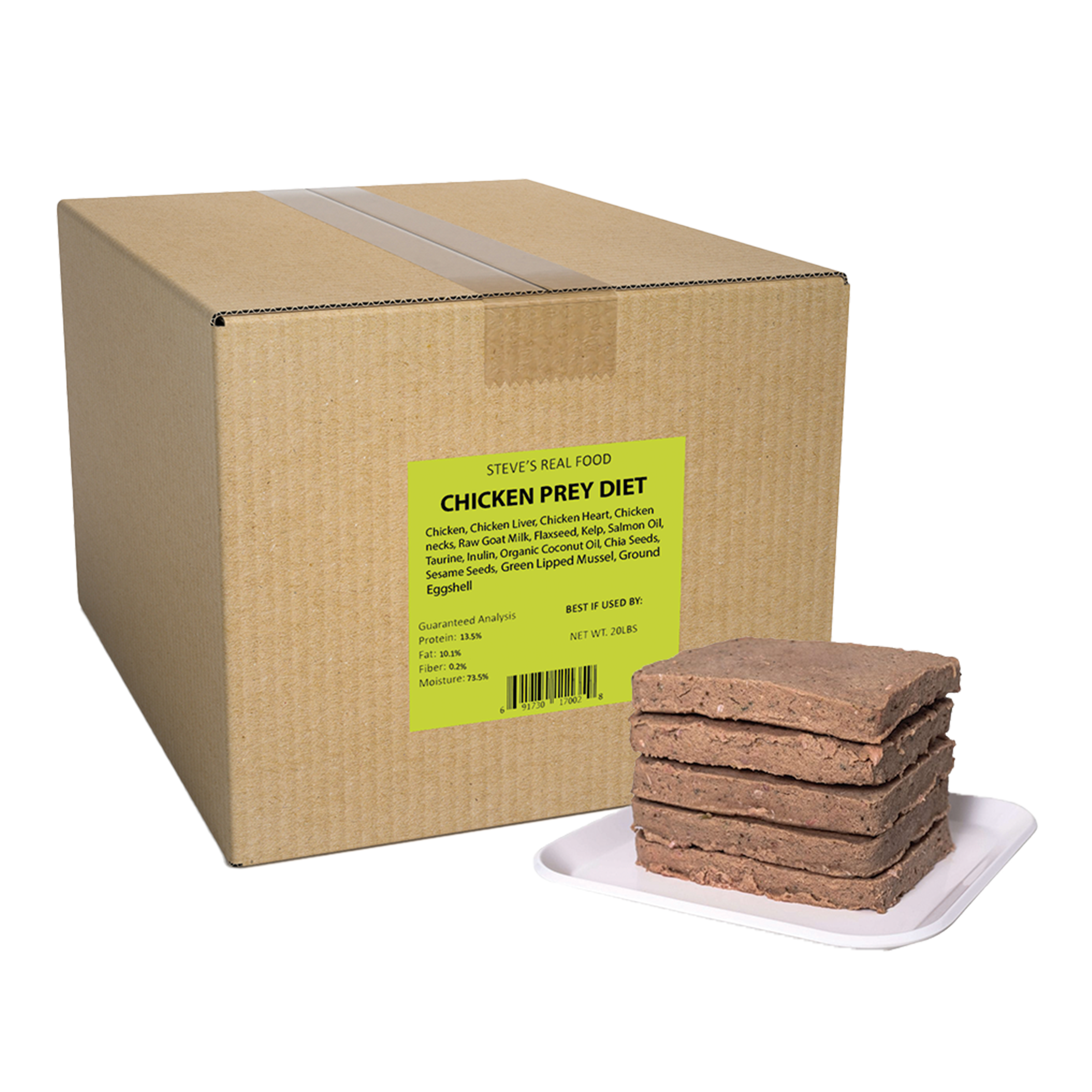 Frozen Prey Diet
Frozen Prey Diet
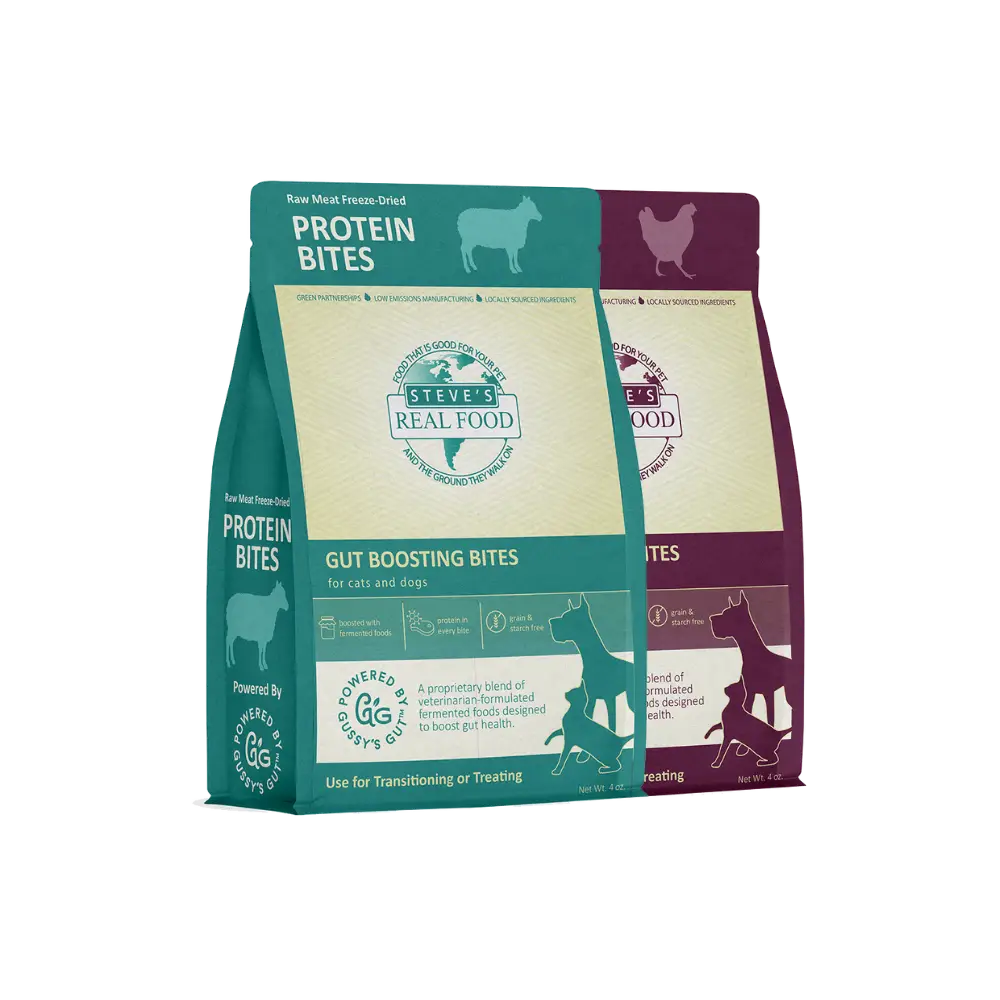 Freeze Dried Protein Bites
Freeze Dried Protein Bites
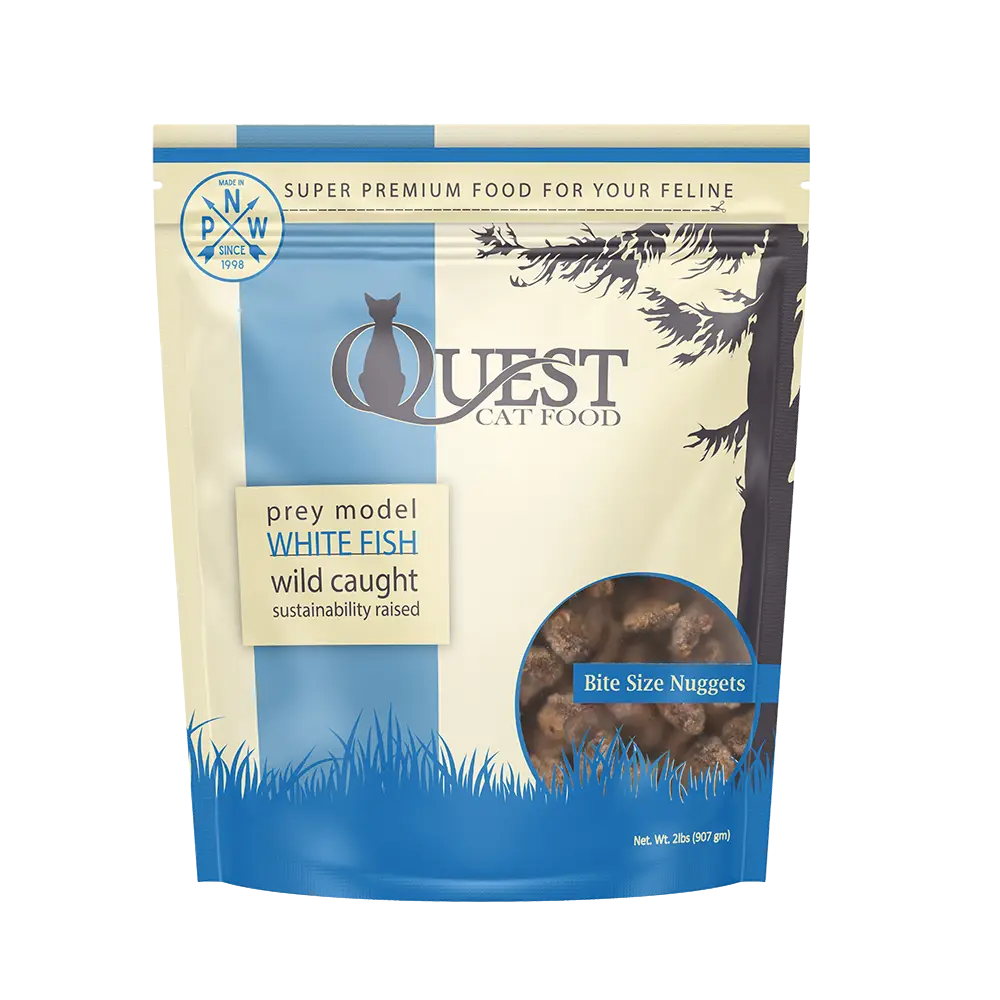 Frozen Quest
Frozen Quest
 Freeze Dried Quest
Freeze Dried Quest
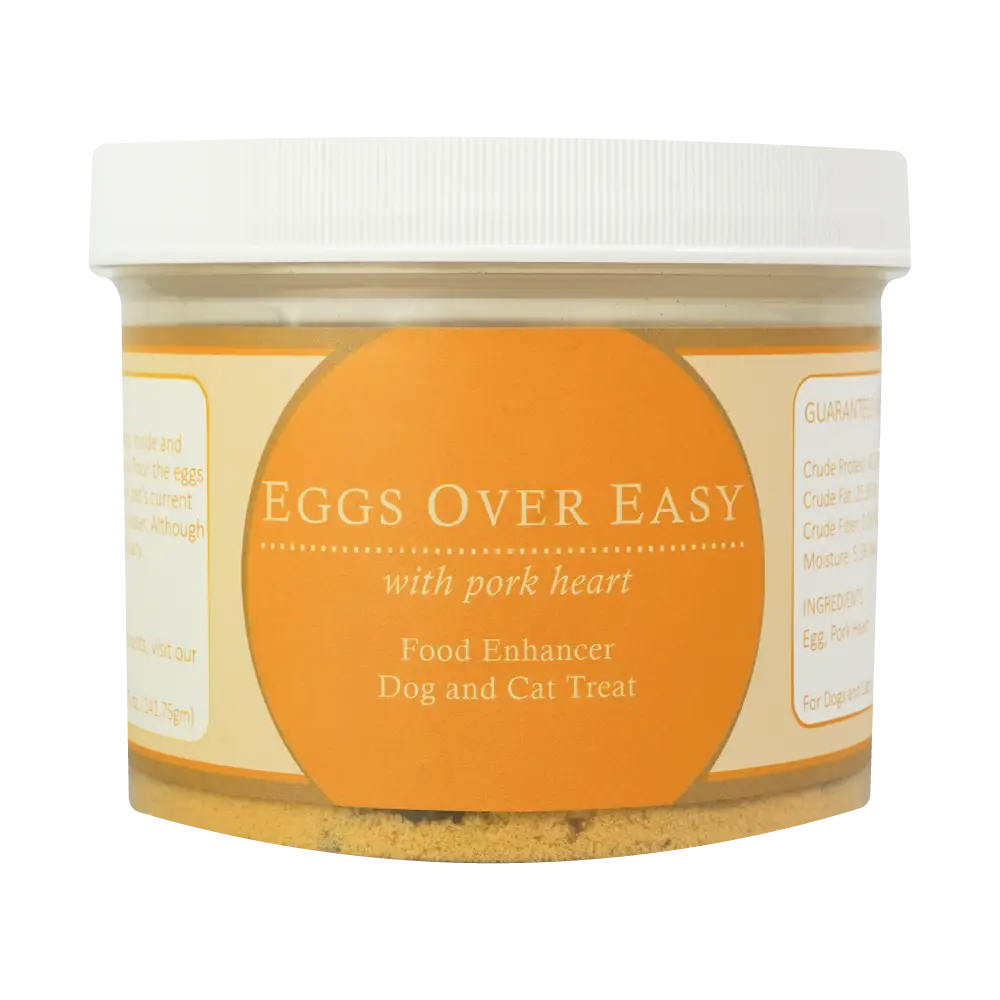 Eggs over Easy
Eggs over Easy
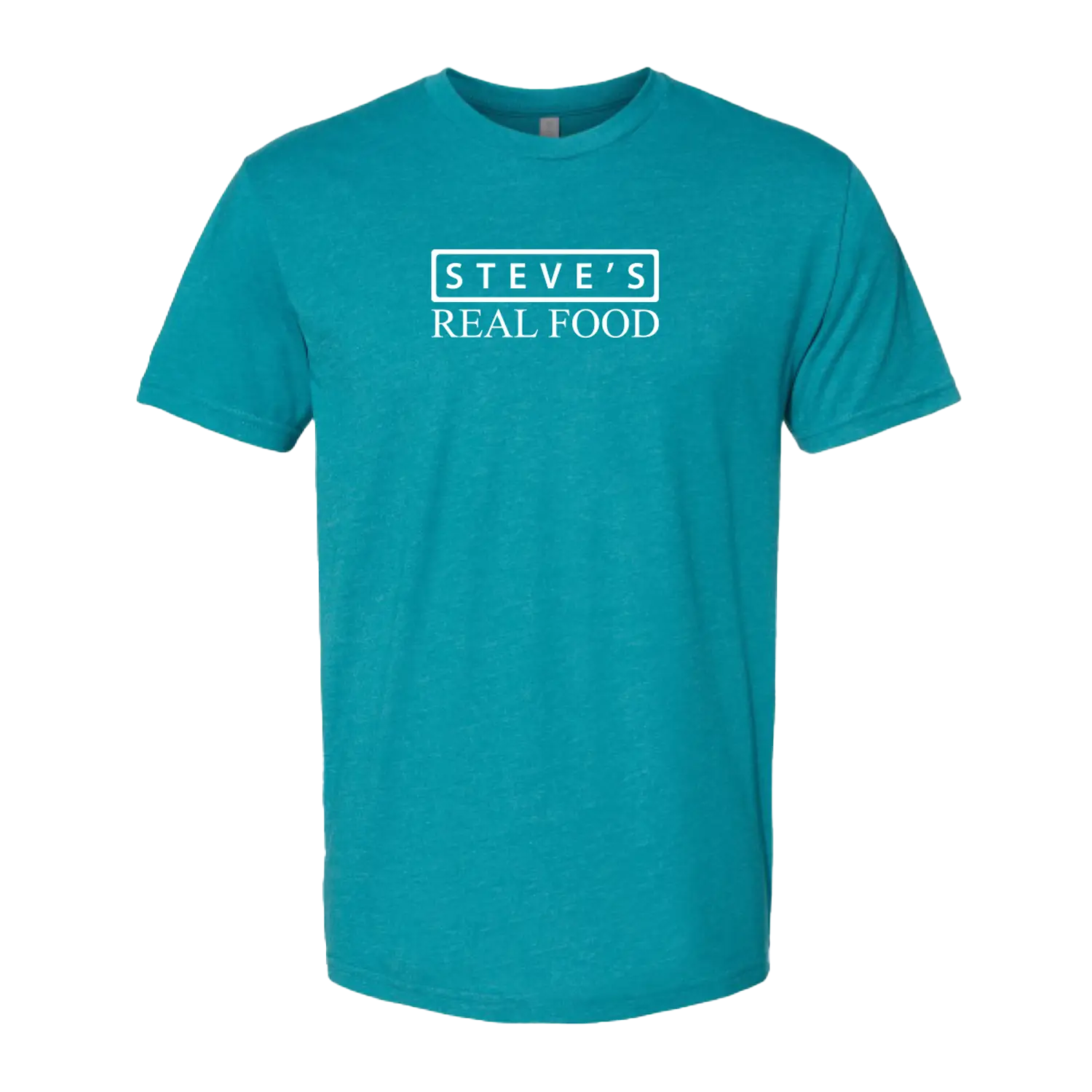 Steve's Merch
Steve's Merch 